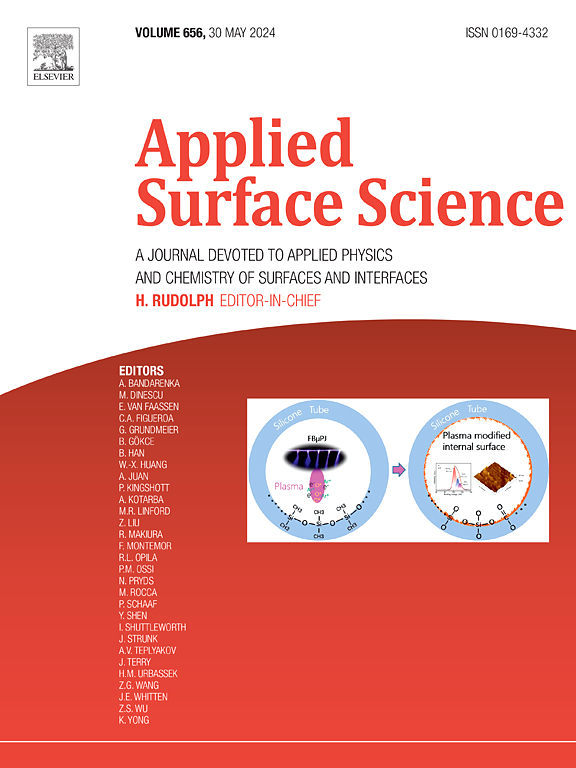Gap-enhanced V-shaped SERS substrate for multiplex trace dye pollutants detection in river water
IF 6.3
2区 材料科学
Q2 CHEMISTRY, PHYSICAL
引用次数: 0
Abstract
Surface-enhanced Raman scattering (SERS) is a powerful analytical tool for detecting trace pollutants due to its molecular fingerprint specificity and single-molecule sensitivity. However, conventional two-dimensional gap-enhanced substrates suffer from limited analyte diffusion into nanogap caused by plasmonic material hydrophobicity. Herein, we present a V-shaped SERS substrate designed to overcome these challenges through three synergistic mechanisms: (i) three-dimensional (3D) plasmonic nanogaps, (ii) gravity-driven analyte enrichment enabling efficient aqueous-phase molecule transport, and (iii) light-trapping nanopores amplifying electromagnetic fields. By utilizing atomic layer deposition (ALD)-defined ultrathin alumina sacrificial layers, we achieved precisely tunable nanogaps (2–10 nm) between gold nanoparticles (AuNPs) and the underlying gold film (Au) within V-shaped architectures. The optimized 6 nm AuNPs-gap-Au nanostructure balances near-field intensity and aqueous analyte accessibility, achieving sub-nanomolar sensitivity for rhodamine 6G with outstanding reproducibility (RSD < 9 % across 10−9–10−5 M). Significantly, the substrate enables multiplex detection of dye pollutants (basic blue 3, malachite green, methylene blue) at sub-nanomolar level in river water, showing great potential for real-time, on-site monitoring of emerging pollutants in natural water systems.

缝隙增强v形SERS衬底用于河流水中多重痕量染料污染物的检测
表面增强拉曼散射(SERS)由于其分子指纹特异性和单分子灵敏度而成为检测痕量污染物的有力分析工具。然而,由于等离子体材料的疏水性,传统的二维间隙增强衬底受到分析物向纳米间隙扩散的限制。在此,我们提出了一种v形SERS衬底,旨在通过三种协同机制克服这些挑战:(i)三维等离子体纳米间隙,(ii)重力驱动的分析物富集,实现有效的水相分子运输,以及(iii)光捕获纳米孔放大电磁场。通过利用原子层沉积(ALD)定义的超薄氧化铝牺牲层,我们在v形结构中实现了金纳米颗粒(aunp)与底层金膜之间的精确可调纳米间隙(2-10 nm)。优化的6 nm AuNPs-gap-Au纳米结构平衡了近场强度和水溶液分析物的可及性,实现了对罗丹明6G的亚纳摩尔灵敏度,并具有出色的重现性(RSD <; 9 %,10−9 - 10−5 M)。值得注意的是,该底物能够在亚纳摩尔水平上对河水中的染料污染物(碱性蓝3、孔雀石绿、亚甲基蓝)进行多重检测,显示出对自然水系中新出现的污染物进行实时、现场监测的巨大潜力。
本文章由计算机程序翻译,如有差异,请以英文原文为准。
求助全文
约1分钟内获得全文
求助全文
来源期刊

Applied Surface Science
工程技术-材料科学:膜
CiteScore
12.50
自引率
7.50%
发文量
3393
审稿时长
67 days
期刊介绍:
Applied Surface Science covers topics contributing to a better understanding of surfaces, interfaces, nanostructures and their applications. The journal is concerned with scientific research on the atomic and molecular level of material properties determined with specific surface analytical techniques and/or computational methods, as well as the processing of such structures.
 求助内容:
求助内容: 应助结果提醒方式:
应助结果提醒方式:


